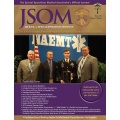Tools to Assess and Reduce Injury Risk (Part 2)
Knapik JJ 17(4). 104 - 108 (Journal Article)
Research has shown that many injuries are preventable if the operational environment is understood. Useful tools are available to assist in assessing injury risks and in developing methods to reduce risks. This is part 2 of a two-part article that discusses these tools, which include the Haddon Matrix, the 10 Countermeasure Strategies, the Injury Prevention Process, and the US Army Risk Management Process. Part 1 covered the Haddon Matrix and the 10 Countermeasure Strategies; part 2 outlines and provides examples of the Injury Prevention Process and the US Army Risk Management Process. The Injury Prevention Process is largely oriented to systematic research and involves (1) surveillance and survey to document the size of the injury problem, (2) identification of the causes of and risk factors for injuries, (3) intervention to identify what works to prevent injuries, (4) program implementation based on documented research, and (5) program evaluation to see how well the program works in the operational environment. The US Army Risk Management Process involves (1) identifying hazards, (2) assessing hazards, (3) developing controls for reducing hazards, (4) implementing controls, and (5) supervising and evaluating controls. There is overlap among the four approaches, but each has unique aspects that can be useful for thinking about and implementing injury prevention and control measures.


 Español
Español 




